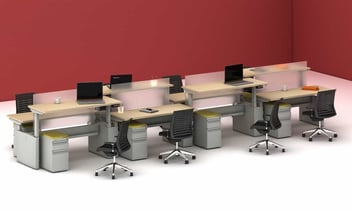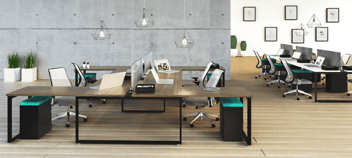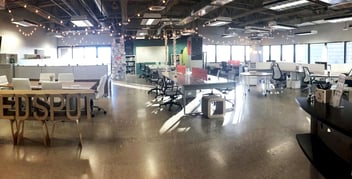Inclusivity in Office Furniture
Inclusive design is often overlooked until companies want to integrate employees with disabilities in their workforce. Prepare for it by acquiring the right furniture.
With the occupation of generation Z in the office, many business owners get compelled to create an all-inclusive working environment to suit diversified employees.
Smart workplaces have become the new norm, and they have highlighted the benefits of diversification and inclusion of employees. This has led to increased engagement, revenue, new ideas, productivity, and employee participation.
People overlook inclusive design until companies want to integrate diverse employees into their workforce. You can prepare for it by acquiring the right furniture. This ensures that the needs of every employee get met.
What Is Inclusive design?
Inclusive office design is the design of a surrounding that everybody can access including the disabled and mentally challenged. An inclusive office boasts furniture that accommodates differently-abled employees and clients.
Inclusive office design was first introduced by Ronald L. Mace. His idea later paved the way for the seven universal design principles that were launched in 1997 by the N.C state committee. It advocated for:
- Error tolerance
- Flexible use
- Simple and intuitive use
- Intuitive information
- Equal use
- Minimal physical effort
- Space and size for approach and use
The seven principles gave rise to the idea that designing an inclusive office isn’t about focusing on just physical differences: Rather, it incorporates different working styles and focuses on employee’s mental health.
Interior Inclusive Design
Modern office layouts offer workplace choices for unique work and preferences. For example, employees with ADHD can choose an ideal workplace for themselves on any day. This means the inclusive interior design doesn’t just segregate a particular office for employees with special needs. Here are a few steps for creating an inclusive design.
Enhance your floor plan
Change your traditional office space into a flexible and co-working surrounding that prioritizes innovation and participation. Invest in a versatile office layout that encourages communication and inclusivity. Let it ease movement for wheelchairs by installing extensive walkways and ramp access where necessary.
Let Your Employees Contribute Some Ideas
Employees enjoy working when they get engaged in decision-making. If you are planning to renovate the office or upgrade some spaces, let your employees say on the idea. This will make them feel valued and engaged.
Choose Your Color Theme
Different colors have different meanings. They also have control over your employees’ mood and behavior. You can incorporate the best colors that enhance your employee’s mood and productivity. Some colors you can use include blue for trust, yellow for confidence, and orange for comfort.
Offer Flexibility
Many young professionals like working in companies that boast flexible working hours, workspaces, and inclusive design. For example, you can incorporate desk hoteling, which allows employees to book a desk when they need it for a certain period and do a specific type of work.
An Open Office Design
An open office plan accommodates all office desks in one room. All employees, regardless of their working level, share the same space under one floor. This plan makes a perfect interactive and collaborative space for executives and employees. It is an engaging office for disabled people since it doesn’t segregate them into unique rooms. So, they feel involved and accepted.
Flexible workspaces
If an open office plan doesn’t work for you, you can configure your space and arrange related department desks close to each other. You can also plan depending on collaboration in the office. This will allow flexibility in the office and allow everyone to move freely while keeping personal space.
Accessible Handles and Doors
Ensure that your office designer follows the “closed-fist rule” that ensures all employees can run all storage units and pieces of equipment with a fist. This includes levers, U-shaped handles, push latches, and side-hinged doors. This makes every office space accessible to all employees by keeping handles and notches at reachable levels.
Inclusion of Ramp
Add some ramps to your building besides the stairs. This makes easy access for disabled employees to the office.
Height Adjustable Furniture
Invest in adjustable chairs and desks with different storage ranges for reach by all employees. You can also Install some adjustable lighting that employees can run using touch panels.
Conclusion
Making a few adjustments, as shown above, can help create the office of the future. You can either rearrange your office layout to an open one that allows flexible movement in the office. You can also invest in some items such as ramps, adjusting furniture, accessible handles, and bars.
At Gebesa, we take inclusion seriously and would like to know what your needs are and how we can help you.





